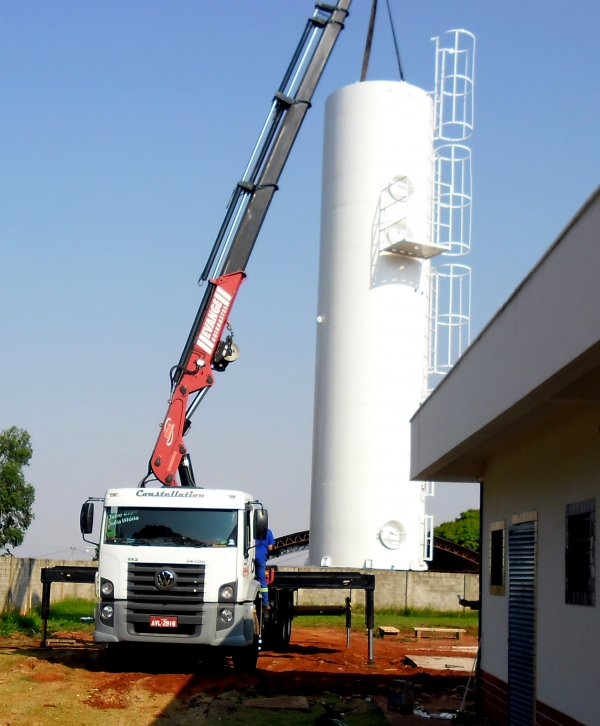For water or liquid storage needs, a tubular metal reservoir stands out as a durable and versatile option. Praised for its structural integrity and design, this type of reservoir is ideal for various industries, including farming, manufacturing, and commercial projects.

In this guide, you’ll learn everything about tubular metal reservoirs. Whether you’re looking for a solution to store water, chemicals, or other liquids, this comprehensive overview will help you make the right choice.
What Is a Tubular Metal Reservoir?
A tubular metal reservoir is a cylindrical storage system, engineered for long-term reliability. Manufactured using high-grade metals, these reservoirs are resistant to corrosion and structural stress.

Thanks to its tubular shape, this reservoir distributes pressure evenly, making it suitable for high-capacity storage needs. Its modular and customizable features make it ideal for both large-scale and small-scale projects.
Key Features of Tubular Metal Reservoirs
These tanks offer several advantages that make them a top choice for liquid storage. Here’s what makes them a preferred option:
- Durable Construction: Crafted from materials like stainless or galvanized steel, these reservoirs withstand extreme conditions.
- Compact Design: This design optimizes storage capacity, making it practical for limited areas.
- Versatility: Perfect for storing water, chemicals, or fuels, these reservoirs can serve a variety of purposes.
- Corrosion Resistance: With protective coatings, these tanks are highly durable, ensuring long-term reliability.
- Customizability: Can be tailored to meet specific requirements, allowing for optimal performance in any scenario.
How to Choose the Right Tubular Metal Reservoir
Choosing the ideal metal tank depends on your specific requirements. Here’s what you should keep in mind:
- Storage Volume: Determine the volume you need to store. High-capacity reservoirs work best for factories or farms, while compact models are great for homes or small businesses.
- Material: Consider whether you need stainless steel, aluminum, or galvanized steel. Steel is durable and rust-resistant, while galvanized options work well for non-drinking water.
- Placement: Think about where the tank will be installed. Above-ground tanks are easier to access and maintain, while buried tanks offer greater security and protection.
- Additional Features: Ensure the tank has coatings for corrosion resistance to extend its lifespan.
- Cost Efficiency: Factor in initial price and long-term maintenance. Higher-quality tanks may save money in the long run.
Tips for Longevity and Performance
Regular care is essential to ensure the tank remains in optimal condition. Here are some maintenance tips:
- Keeping the Interior Clean: Regularly clean the inside of the tank to ensure the stored liquid remains uncontaminated.
- bebedouro australiano preço
- Monitor the Tank’s Condition: Check for leaks, corrosion, or dents, and address issues immediately.
- Reapply Coatings as Needed: Recoat areas exposed to the elements to prevent rust and corrosion.
- Weatherproofing: Protect the tank from extreme temperatures and weather to maintain consistent performance.
Where Tubular Metal Tanks Shine

Tubular metal tanks are popular in various fields due to their versatility and durability. Common applications include:
- caixa d agua metalicacaixa de água taça
- Agriculture: Used for water storage in agricultural operations.
- Factory Settings: Perfect for storing chemicals, oils, or production liquids.
- Municipal: Essential for municipal water management.
- Home Use: Great for rainwater harvesting or emergency water storage.
Final Thoughts: Why Invest in a Tubular Metal Reservoir?
To wrap up, these durable and efficient storage solutions offers a reliable way to store liquids. Combining strength with adaptability, ensure it meets a wide range of requirements.
Whether you need it for agricultural, industrial, or residential use, a tubular metal reservoir is a solution you can trust. Invest in one now and experience the benefits!
Comments on “The Ultimate Guide to Choosing an Australian Water Fountain”